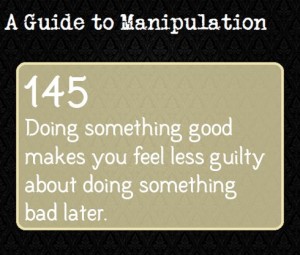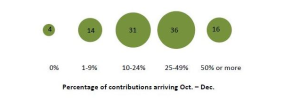As a young girl awakens during the early hours of the morning, a powerful sense of fear and despair overcomes her entire body. She is afraid. Fearful of the normal/everyday activities she will have to face. Sound familiar? The amount of adolescents suffering from anxiety disorders has increased drastically during the past few years. A dangerous increase in materialism and lack of control seems to have pushed teens over the edge. Why is it that there is a significantly higher rate today than there was thirty years ago?
In a study led by Jean Twenge, author of “Generation Me” and an associate professor of psychology at San Diego State University, she utilized over 63,000 high school and college student’s past results of the Minnesota multi-phasic personality inventory. In doing so she found that eighty-five percent of college students fall above the mental illness norm of students in the 1940s. Many people believe that the rise is because of increasing materialistic views. Our society is wired to believe that objects control their fate, as well as the way they feel. It is believed that a cultural change has played a big role in increasing anxiety disorders. Twenge says that, “These results suggest that as American culture has increasingly valued extrinsic and self-centered goals such as money and status, while increasingly devaluing community, affiliation, and finding meaning in life, the mental health of American youth has suffered.” People have shifted away from “intrinsic” values and towards “extrinsic” values. For example, a majority of high school students would prefer a higher scoring grade (extrinsic value) rather than actually understanding the concepts (intrinsic value) they are being graded on. All that seems to matter to the majority of students is the number- the quantity over the quality.
Our culture has become more focused on materials, rather than relationships. Bonds formed with others, in the end, are what ultimately help us get through situations. As a result of a deficiency in strong/stable relationships- students have reported that they feel isolated, lonely, misunderstood, unstable, and very emotional. They also have reported low self esteems, and dissatisfaction with the lives they are living. As adolescents are turning to materials for comfort and satisfaction, their anxiety increases. It is not a stable enough support system and it becomes addicting. The focus on materials has never been so strong until recent years.
Other sources believe that higher rates of anxiety today, comes from lack of control. Adolescents lives today seem to always be under the control of everyone else; other than themselves. They are constantly being instructed, and pushed into environments/situations that they do not want to be in. When people feel that they have limited to zero control over their future, they naturally become nervous. When this anxiety becomes powerful enough, it turns into depression. Allowing other people to control your life makes you feel hopeless, anxious, and depressed. A persons sense of control can be measured using the rotter’s scale. The rotter’s scale is a questionnaire constructed by Julien Rotter during the late 1950s. Each question allows you to choose an answer that either follows the belief of an internal locus of control (the individual has control), or the belief of an external locus of control (forces outside of the individual have control). Studies show that people who score towards having individual control (internal locus of control) live better lives, free of anxiety disorders.
Another part of feeling a sense of control of your life, is your ability to “free-play”. Not allowing young adults to have time on their own, away from direct supervision and control, deprives them of being able to find themselves and learn how to take control of their lives. This is extremely unhealthy and damaging for young adults futures. An environment that does not allow much free play, yet teenagers spend a majority of their time in, is school. Psychologist Peter Gray says that, “Children today spend more hours per day, days per year, and years of their life in school than ever before. More weight is given to tests and grades than ever before. Outside of school children spend more time than ever before in settings where they are directed, protected, catered to, ranked, judged, and rewarded by adults. In all of these settings adults are in control, not children.” When students are attending school it is the teachers opinions and judgements that matter in the classroom, most of the time nothing that comes from the student will be acknowledged. A student could love the topic he chose for a paper, but if the teacher disagreed, the student would not write about it. Often times if students are given freedom they will educate themselves, and if it is something they enjoy- they will happily educate themselves. In a situation where they are given this freedom, they would have intrinsic (quality) values over extrinsic (quantity). Over time, control and supervision over young adults has increased dramatically causing a lack of self/control in adolescents, resulting in anxiety.
In doing research on this topic, I came up with my own hypotheses. Social conditioning as a contribution to mental illness is something that I believe is underrated. Social conditioning is a term that many of us are unaware of because we are unconsciously participating in it. It is the process of training individuals in society to have certain beliefs, behaviors, desires, and emotional reactions, which are accepted by society. If you were to ask a kindergartner what they wanted to be when they grew up, they would say the craziest things and an adult would brush it off and tell them its not possible. Fast forward a few years and they have been conditioned to pursue something “realistic”. Another example is our societies emphasis on college. If one does not attend college they may be looked at in a negative way. What we don’ take the time to realize is that college is not for everyone. Some people don’t find happiness in scholarly education. Ultimately if you are following societies norms instead of creating your own life, you will begin to feel distressed and this could lead to depression.
The amount of adolescents suffering from anxiety disorders has increased an immense amount during the past few years. The pressures of being a teenager have become more difficult and competitive than ever before. Subconsciously our actions have created an unhealthy society that values materials over everything, and conditions individuals to be a certain way. We may not notice how dangerous this is because it has become the norm, but if it continues future generations will face the consequences of our actions. If this way of life persists, in thirty more years there will be statistics showing a high increase in anxiety from today.
Sources:
http://abcnews.go.com/Health/MindMoodNews/todays-teens-anxious-depressed-paranoid/story?id=9281013
http://www.nbcnews.com/id/39335628/ns/health-mental_health/t/why-are-anxiety-disorders-among-women-rise/#.VmGqg9-rRsO
http://iameduard.com/socialconditioning/
Click to access bisci_hero’s_journey.pdf
https://www.psychologytoday.com/blog/freedom-learn/201001/the-decline-play-and-rise-in-childrens-mental-disorders







 it clearly.” The personal achievement and joy that could come out of a vacation is amazing. Along with physiological benefits, there are also physical benefits. Robinson says that an annual holiday can cut the risk of heart attack in men by 30 percent and in women by 50 percent. Vacations also have shown to cure burnout, improve self-esteem, reduce ones loneliness and increase self-actualization. Not a bad bargain at all. You get a refreshing break and feel like a healthy new person afterward.
it clearly.” The personal achievement and joy that could come out of a vacation is amazing. Along with physiological benefits, there are also physical benefits. Robinson says that an annual holiday can cut the risk of heart attack in men by 30 percent and in women by 50 percent. Vacations also have shown to cure burnout, improve self-esteem, reduce ones loneliness and increase self-actualization. Not a bad bargain at all. You get a refreshing break and feel like a healthy new person afterward.